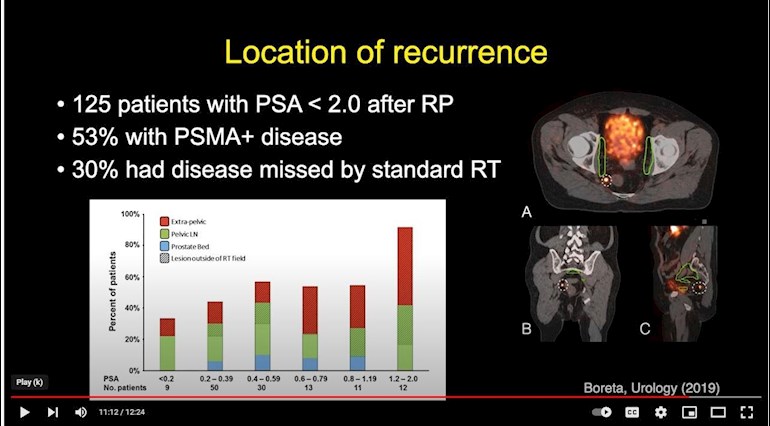An update on PSMA PET with good information on how it works and why its so accurate when compared to other imaging modalities. Also, patients with low PSA of 2.0 and below can be scanned. For this group 30% of tumors would have been missed had they received RT (IMRT) with only normal imaging (bone, PET and other scans)...important is that the same 30% is the rate of IMRT patients who recur and must be re treated. This presentation makes the claim that its the inaccurate imaging that is the cause...provocative. PSMA PET will become the standard of care and a primary means to determine treatment. I received a PSMA PET on January 5, 2021 and was amongst the first men on Florida to receive a scan; went to UCLA to get this done. I insisted on it after my RP and before I proceeded with IMRT to make sure I had no MET...had to fight to get the scan. My scan was negative for MET. When he saw the results my oncologist stated he was "enthused" to see I had no MET before we started IMRT...am now on a 2 year post-RT, ADT treatment, then I start monitoring my PSA...
I see a lot of new patients state that they have been 'scanned' and are proceeding with their treatments. I can only hope and would greatly recommend that if that scan was other than a PSMA PET that it should be redone...PSMA PET changes treatment regimes in many cases based on what it finds. TNX
